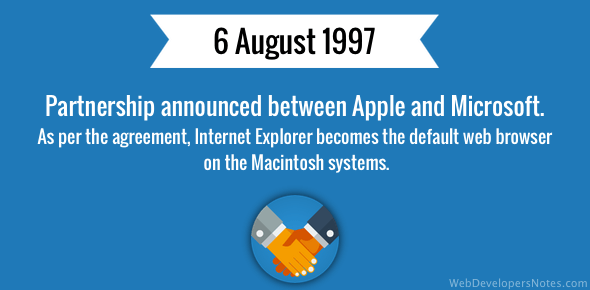The recent Microsoft iPhone partnership marks a pivotal shift in the tech landscape, as exemplified during the Salesforce’s annual Dreamforce conference. Microsoft CEO Satya Nadella took the stage, humorously revealing the iPhone he was using wasn’t his own, yet it was equipped with a suite of Microsoft Office apps. This collaboration not only signifies a new era for Microsoft under Nadella’s leadership but also showcases the versatility of their cross-platform mobile apps. The integration of Microsoft’s offerings on the iPhone adds a layer of convenience for users, highlighting the increasing synergy between historically competing tech giants. As Nadella emphasized, the capabilities of the iPhone transform it into a ‘pro’ device, indicative of a broader trend towards collaborative innovation in the industry.
In light of recent developments, the collaboration between Microsoft and Apple marks a significant evolution in their relationship. During a prominent tech event, the CEO of Microsoft showcased the capabilities of Microsoft’s applications on the popular iPhone platform, illustrating a move towards creating seamless user experiences across devices. This partnership signals the dawn of a new era in technology where cross-company alliances foster enhanced productivity tools, particularly for mobile users. As we witness these changes, it becomes clear that both companies are adapting to a rapidly evolving market landscape, bridging gaps in software ecosystems. By leveraging their strengths together, Microsoft and Apple are paving the way for more integrated technology solutions that benefit consumers and businesses alike.
Satya Nadella’s Keynotes at Dreamforce: A New Microsoft Era
At the recent Dreamforce conference, Satya Nadella captivated the audience by using an iPhone to showcase Microsoft’s latest cross-platform mobile applications. This not only highlighted the functionality of Microsoft Office on iOS but also emphasized a pivotal shift in Microsoft’s approach to collaboration with traditionally rival companies like Apple. By presenting the iPhone as a vital tool for productivity, Nadella reinforced the company’s commitment to seamless interoperability across platforms, marking a significant evolution in how Microsoft portrays its identity in the tech landscape.
The event marked a clear departure from the competitive rhetoric that defined previous years. Nadella’s open endorsement of the iPhone as a ‘pro’ device equipped with Microsoft apps indicates a profound shift towards a more collaborative future. This partnership culture that is blossoming between Microsoft and Apple sets a precedent for other tech giants, suggesting that the future might see even more cross-company alliances that focus on enhancing user experiences rather than solely breeding competition.
The Microsoft iPhone Partnership: Redefining Productivity
The recent collaboration between Microsoft and Apple was underscored during Nadella’s demonstration of Microsoft Office on an iPhone, underscoring a revolutionary partnership that seems to signal a new phase in tech history. By integrating Microsoft applications on Apple’s devices, users can access powerful productivity tools seamlessly, regardless of their hardware preferences. This development is a critical win for users who rely on both Microsoft services and Apple’s smartphones, promoting versatility and convenience in productivity.
As we witness this partnership unfold, the ramifications for the business world at large are profound. Companies that utilize both Microsoft and Apple products can leverage the best of both worlds, with the Microsoft Office iPhone applications providing robust capabilities alongside the sleek design and intuitive interface of iPhones. This merging of platforms not only enhances individual productivity but also fosters innovation as businesses explore new ways to integrate their workflows across different systems.
Impact of Cross-Platform Mobile Apps on Business Innovation
Nadella’s presentation not only highlighted Microsoft’s cross-platform mobile applications but also hinted at a broader movement within the tech industry towards creating interoperable solutions that meet diverse user needs. As businesses increasingly rely on mobile solutions, the ability to access familiar tools across various devices becomes critical. Cross-platform compatibility empowers users to switch between devices without sacrificing functionality, which is essential for maintaining productivity in today’s fast-paced work environment.
Moreover, with the advent of powerful cross-platform mobile apps, like those demonstrated by Microsoft, organizations are able to facilitate communication and collaboration across teams regardless of the devices they use. This is especially important in remote work scenarios, where flexibility and access to essential tools can make or break successful workflow management. The trend towards cross-platform solutions not only enriches the user experience but ultimately drives business innovation as companies adapt to meet the evolving demands of their workforce.
Salesforce Conference News: What Nadella’s Remarks Mean
During the Dreamforce conference, Satya Nadella’s statements regarding his choice of an iPhone to demonstrate Microsoft’s offerings were not just a moment of humor but a strategic move that reflects a deeper understanding of current market dynamics. By appearing onstage with an Apple device, he signaled to audiences that Microsoft is embracing a new era where cross-platform compatibility is paramount, thus positioning Microsoft as a frontrunner in business productivity solutions.
Nadella’s remarks also served as a clear message to other tech leaders: collaboration is increasingly becoming the bedrock of innovation. As Salesforce and Microsoft have historically viewed each other as competitors, Nadella’s approach suggests a willingness to move past old rivalries in favor of partnerships that enhance user capabilities and promote efficiency. This evolving narrative at major industry events like Dreamforce is crucial for setting the stage for future collaborations and advancements in technology.
The Future of Cross-Platform Applications in the Tech Industry
The evolution of cross-platform applications signifies a future where users are not confined to one brand or ecosystem, allowing them to adopt the best tools available from different companies. Nadella’s presentation at Dreamforce serves as an emblematic moment highlighting the importance of this trend. As both Microsoft and Apple continue to innovate, the convergence of their services through applications like Microsoft Office on iOS not only broadens user choice but also enhances overall productivity.
As the demand for flexible working solutions grows, tech companies must prioritize the development of applications that work seamlessly across various platforms. In this competitive landscape, the ability to use applications from one company on another’s hardware will likely define market success. Companies like Microsoft are poised to lead this charge, emphasizing user-centric designs that prioritize functionality and ease of use regardless of the device in hand.
A New Era for Microsoft: Embracing Change and Collaboration
The recent attitude shift displayed by Microsoft, highlighted by Satya Nadella’s comments at Dreamforce, points towards an era characterized by openness and collaboration. This new Microsoft is willing to embrace change, stepping away from a history of resistance against its competitors. By showcasing Microsoft Office applications on an iPhone, Nadella demonstrated a forward-thinking mindset that prioritizes user experience over traditional rivalries.
With these advancements, Microsoft signals its readiness to adapt and thrive in an ever-changing tech environment. This new approach challenges other tech companies to reassess their strategies and consider the benefits of collaboration over competition. Indeed, as we delve deeper into the future of technology, partnerships between industry leaders like Microsoft and Apple may very well redefine what consumers expect from their devices and services.
Leveraging Mobile Technology for Enhanced User Experience
The integration of Microsoft Office with mobile devices like the iPhone shows the critical role of mobile technology in enhancing user experience. At Dreamforce, Nadella highlighted that these applications are not merely functional tools but are designed to streamline tasks and improve productivity for everyday users. By providing robust functionalities on mobile devices, Microsoft is making sure its applications are accessible to a wider audience, making productivity feasible for on-the-go workers.
Furthermore, the seamless functionality of these applications reinforces the importance of user experience in mobile technology development. Businesses that understand how critical mobile access is for today’s workforce can capitalize on the productivity solutions being offered by Microsoft. This focus on mobility reflects a broader trend towards facilitating effective communication and collaboration irrespective of location, ultimately supporting more agile business operations.
Building Strategic Partnerships: Insights from Dreamforce
The collaborative spirit exhibited during the Dreamforce conference marks a pivotal moment for Microsoft and its approach toward partnerships in the tech industry. Satya Nadella’s demonstration of Microsoft’s offerings on the iPhone not only conveyed a message of compatibility but indicated a strategic shift where aligning with other tech giants can enhance market presence. This openness underscores the belief that, in an interconnected world, collaboration can trump competition, leading to innovative solutions that benefit all.
These partnerships are representative of a new business paradigm wherein technology companies recognize the importance of pooled resources and collective innovation. The insights gleaned from such events suggest that future collaborations will be dictated by a shared vision of improving user experiences and serving business needs more effectively. For organizations looking to stay ahead, understanding and engaging in these partnerships can prove to be crucial for long-term success.
Microsoft’s Cross-Platform Strategy: A Look Ahead
Looking ahead, Microsoft’s commitment to cross-platform strategies illuminates a promising future for businesses relying on software solutions. Nadella’s remarks at Dreamforce serve as a blueprint for other companies eager to expand their ecosystem beyond traditional boundaries. By advocating for the compatibility of their applications on multiple platforms, Microsoft is setting a trend that challenges the status quo in software development, encouraging businesses to innovate with a user-first approach.
Such a strategy is not merely advantageous for consumers but also for businesses looking for agile and adaptable solutions. As the demand for efficiency grows, Microsoft’s ability to provide relevant and effective tools, regardless of the device being used, will undoubtedly influence how enterprises think about their tech stacks. This foresight into cross-platform operability is bound to spur new business models and partnerships that were previously unimagined, paving the way for a vibrant tech ecosystem.
Frequently Asked Questions
What does the Microsoft iPhone partnership mean for cross-platform mobile apps?
The Microsoft iPhone partnership signifies a commitment to developing cross-platform mobile apps that facilitate seamless integration between Microsoft services and Apple devices. This collaboration reflects a new era of interoperability where users can access Microsoft Office iPhone apps and services effortlessly on their iPhones.
How did Satya Nadella showcase Microsoft Office iPhone apps at the Salesforce conference?
At the Salesforce Dreamforce conference, Microsoft CEO Satya Nadella demonstrated Microsoft Office iPhone apps using an iPhone on stage. He specifically highlighted the versatility of the Outlook app, emphasizing it as the best email client for iOS users who utilize Exchange and Gmail.
Why is the Microsoft iPhone partnership significant for businesses?
The Microsoft iPhone partnership is significant for businesses as it enables better collaboration between Microsoft and Apple products. By offering Microsoft Office iPhone applications on Apple devices, enterprises can enhance productivity and streamline workflows, thus embracing a more integrated technology ecosystem.
What changes have occurred between Microsoft and Apple regarding their partnership?
Under Satya Nadella’s leadership, Microsoft and Apple have shifted from criticism to collaboration. The partnership now focuses on developing cross-platform solutions, as evidenced by Nadella’s demonstration of Microsoft Office on the iPhone at the Dreamforce conference, marking the dawn of a new Microsoft era.
What can we expect from the future of the Microsoft iPhone partnership?
The future of the Microsoft iPhone partnership looks promising as both companies continue to explore opportunities for collaboration. This includes the development of enhanced cross-platform mobile apps and potentially deeper integrations that cater to user needs across both ecosystems.
How does the Microsoft iPhone partnership enhance user experience with Outlook?
The Microsoft iPhone partnership enhances the user experience with Outlook by ensuring that the application is optimized for iOS devices. Satya Nadella’s demonstration at Dreamforce emphasized its functionality as an efficient email client, reinforcing its reputation as a leading choice for iPhone users needing robust email solutions.
| Key Point | Details |
|---|---|
| Satya Nadella demos on iPhone | Microsoft CEO used an iPhone onstage at Dreamforce, showcasing Microsoft apps. |
| Microsoft apps on iPhone | Nadella highlighted that iPhone can be a ‘pro’ device with Microsoft Office apps and Skype. |
| Microsoft’s new image | Under Nadella, Microsoft appears more open and collaborative with other tech giants like Apple. |
| Past rivalry with Salesforce | Historic criticisms between Salesforce and Microsoft have lessened in recent years under Nadella’s leadership. |
Summary
The Microsoft iPhone partnership reflects a significant shift in the technology landscape, where collaboration between industry giants is becoming increasingly commonplace. Microsoft’s willingness to demonstrate its software on Apple’s iPhone during a public event like Salesforce’s Dreamforce highlights not only the compatibility of their products but also a change in corporate strategy under CEO Satya Nadella. This partnership signifies a new era where competitive companies can work together to enhance user experiences and drive innovation, ultimately benefiting consumers and businesses alike.








